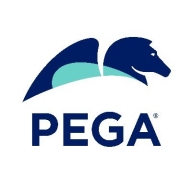

Pega Platform and Oracle BPEL compete in the business process management domain, with Pega excelling in user-friendly features and Oracle BPEL being suitable for complex enterprise environments due to its powerful integration capabilities.
Features: Pega Platform offers intelligent automation capabilities, a rapid application development environment, and a low-code approach. Oracle BPEL is valued for its strong integration framework, orchestration capabilities, and compatibility with diverse systems.
Room for Improvement: Pega Platform can improve in addressing technical challenges and enhancing its integration options for larger systems, while Oracle BPEL could focus on simplifying its user interface, reducing the complexity of its setup processes, and enhancing customer support accessibility.
Ease of Deployment and Customer Service: Pega Platform provides a smooth cloud and on-premise deployment with responsive support, ensuring easier implementation. Oracle BPEL involves a more technical setup, requiring specialized knowledge, but benefits enterprise-level integration strengths.
Pricing and ROI: Pega Platform offers a competitive setup cost with a favorable ROI due to its efficient low-code development. Oracle BPEL, with a higher initial investment, yields substantial returns in scenarios where extensive system interconnectivity is critical, justifying its long-term cost for specific enterprise applications.
| Product | Market Share (%) |
|---|---|
| Pega Platform | 6.2% |
| Oracle BPEL | 0.8% |
| Other | 93.0% |

| Company Size | Count |
|---|---|
| Small Business | 9 |
| Midsize Enterprise | 15 |
| Large Enterprise | 68 |
Pega Platform provides flexible business process management with a focus on rapid application development and automation through a low-code approach, enhancing efficiency across sectors.
Pega Platform is renowned for its ability to streamline operations with robust automation features, including robotic process automation and decision-making capabilities. Its intuitive interface and workflow management contribute to a reputation for enhancing business processes. Although users face challenges with integration limitations and high licensing costs, they benefit from rapid deployment and efficient process adaptations. The unified architecture reduces complexity, while case management and integration services support digital transformations in sectors such as banking, insurance, and healthcare.
What are the key features of Pega Platform?In industries like insurance, banking, healthcare, and government, Pega Platform is implemented to automate diverse workflows, supporting initiatives from claims processing to customer onboarding. Enterprises use Pega for case management and digital transformations, valuing its out-of-the-box integrations and real-time reporting capabilities to boost operational automation and enhance customer experiences.
We monitor all Process Automation reviews to prevent fraudulent reviews and keep review quality high. We do not post reviews by company employees or direct competitors. We validate each review for authenticity via cross-reference with LinkedIn, and personal follow-up with the reviewer when necessary.